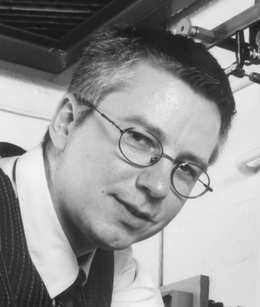Green Chemistry: a new phase
Green Chemistry has been a major success story ever since the first volume was published in February 1999. Therefore, it was a great honour for me when I was approached and asked whether I would be willing to follow James Clark as the Scientific Editor for this journal. At the same time, I realised that it would be a very challenging task to foster the successful growth of such a well-renowned journal. However, I was more than happy to devote myself to this endeavour as I am absolutely convinced that both the journal and the field of Green Chemistry have many reasons to be optimistic for their future development.
It would have been impossible for Green Chemistry to actually materialize as a journal on our PCs or desks and in many libraries without the dedication and the excellent work of the first Scientific Editor James Clark and his team at York. The most recent evidence for the prospering development seeded through this effort is the decision of the Royal Society of Chemistry to increase the publication rate of Green Chemistry to 12 issues per year from 2004. In a situation where many long-existing journals are facing increasing difficulties through budget cuts in libraries, this step constitutes at the same time a reward for a truly successful history and a challenge for the future. Green Chemistry is all set to accept that challenge! The Editorial Board headed by Colin Raston and the International Advisory Board continue to shape the journal to become one of the leading sources of reference in chemistry and its neighbouring disciplines. The RSC team led by Harp Minhas as the Managing Editor handles all publishing affairs efficiently and – with the aid of the referees – ensures rapid turnaround of manuscripts. Authors from all over the world submit fascinating research articles in a variety of disciplines and the latest impact factor of 2.54 in 2002 indicates that this work is followed by a very broad and active audience.
Scientific publications addressing the field of “green chemistry” are emerging rapidly in many places. In the period 1999–2002, the number of publications with this key word has more than doubled every year and as of December 2003 over 1700 entries can be identified in SciFinder. Interestingly, this includes a significant number of patents and patent applications. Naturally, a large portion of these contributions deal with synthetic chemistry, but important areas such as life cycle assessment, toxicology, and green engineering are also at the heart of the development. Thus, the pool of potential contributions for the journal Green Chemistry can be expected to expand substantially in the next few years. At the same time, Green Chemistry will continue to establish rigorous scientific standards to attract top quality contributions. In 2003 the acceptance rate was just over 30% and maintaining and fostering these rigorous criteria will help to strengthen the journal’s “scientific spine.”
Green Chemistry can also capitalize on its role as a reliable catalyst for encouraging communication between researchers, institutions, governmental bodies, funding agencies, and the public. The News and Views section forms an ideal platform for exchange of the latest news on events and trends. Conference announcements and reports are, for example, an integral part of this information. The section also features Highlights from other journals and – a relatively new format – Research Profiles of eminent scientists in the field. It would be nice to see this section used increasingly also as a forum to express opinions and for scientific debate. Markus Hölscher has accepted responsibility as the new “News Editor” and any information that seems suitable for this part of the journal can be submitted either to him or to the Cambridge Office directly.
Thus, there is no doubt that Green Chemistry has grown up, both as a journal and as a field of scientific endeavour. As a visualisation of this maturation, research articles are no longer accompanied by the “Green Boxes” that helped to define the context of the contributions in the early phase. All the enthusiasm and the hard work of those involved in the making of Green Chemistry would have been in vain, however, without the excellent scientific work of all the authors and without the critical interest of their audience. Therefore, I would like to encourage you to continue to send your best work to Green Chemistry and to make your colleagues aware of the benefits of publishing in the leading journal in the field.
I wish all colleagues, authors, and readers a peaceful year in 2004, happiness in their private life, fruitful research in an exciting science, and success with Green Chemistry!
Professor Walter Leitner
Scientific Editor, Green Chemistry
leitner@itmc.rwth-aachen.de
| This journal is © The Royal Society of Chemistry 2004 |

